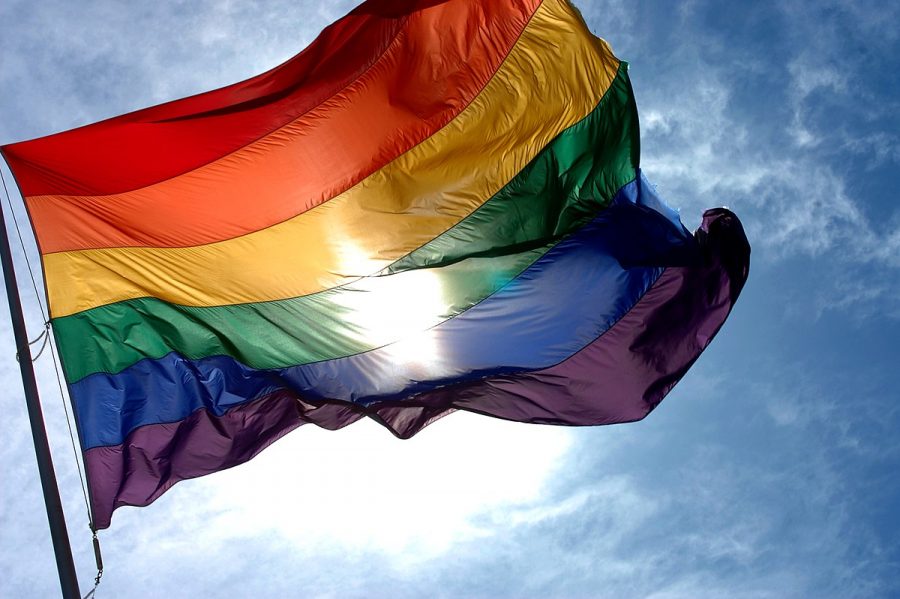“Acceptance is key”: Thoughts on Pride Month and the Road to Equality from a Scarlet Knight
To celebrate Pride this June, the Hilltopper has invited guest writer Amy Srsich to share their observations about the LGBTQ+ experience. Srsich is a sophomore in the Magnet Program for Math and Science.
As many know, June is Pride Month. As derived from the Library of Congress, Pride Month occurs every year in June to honor the 1969 Stonewall Uprising. The Stonewall Uprising happened in Manhattan and was a tipping point for the Gay Liberation Movement in the United States. After this uprising, the United States designated the last Sunday in June as “Gay Pride Day.” Soon after, in major cities, the day soon grew to encompass a month-long series of events. Currently, Pride Month is filled with celebrations that include parades, picnics, parties, workshops, symposia, concerts, and marches. These celebrations take place worldwide and attract millions of participants. At the same time, memorials are held for the members of the community who died as victims of hate crimes or from HIV/AIDS. This month is dedicated to recognizing the impact LGBTQIA+ individuals have had on history locally, nationally, and internationally.
Coming out to friends and family can be extremely difficult and stressful for anyone. Coming out is when you decide to reveal your sexual orientation and/or gender identity to those with whom you are close. As the Trevor Project articulates, each person should remember that they are valid and deserve support when coming out. The Trevor Project also reports that having at least one accepting adult could result in an LGBTQ+ youth to being 40% less likely to report a suicide attempt. Additionally, it was shown that over one-quarter of LGBTQ+ youth who did not have at least one accepting adult in their life reported attempting suicide in the past year compared to 17% of those with at least one accepting adult. This statistic highlights the importance of creating accepting environments for all.
Creating an accepting environment can be quite confusing to many—people may feel unsure how to start. As stated by the Trevor Project, an excellent way to become an ally to LGBTQ+ individuals is by researching LGBTQ+ and the Trevor Project history and understanding the different terminology related to LGBTQ+ communities. This can ensure that you understand the various labels and terms people use and prevent hurting someone by using the wrong terminology. Another thing you can do to create a more accepting environment is to learn about the challenges that face LGBTQ+ youth both every day and throughout their lives. The last thing you could do is to go through Trevor Ally Training. If you are interested, you can find this on the Trevor Project website under Programs and Services.
A major factor in being an ally to the transgender and nonbinary community is understanding the difference between sex and gender identity. As the Trevor Project states, the sex of a person is the classification of a person as male, female, or intersex. This is typically listed on the birth certificate and is usually based solely on one’s genitals. Nevertheless, sex characteristics also include chromosomes, gonads, and sex hormones. Sex is assigned at birth and may not correspond to gender. Gender describes our internal understanding and experience of our own gender identity. Each person’s gender identity is unique and personal, but there are still a few common ones like cisgender, transgender, and nonbinary. Along with sex and gender identity, there is also gender expression, which is how we present our gender through physical appearance. You can also be an ally to trans and nonbinary people by refraining from making assumptions about others’ gender identity. You can do this by introducing yourself with your pronouns when you meet a person, which can give them the opportunity to share their pronouns. A third way to be accepting is to use the new name that person has chosen and using the new pronouns and honorifics that they have decided to use. Some pronouns are she/her/hers/herself, he/him/his/himself, they/them/their/theirs/themself, ze/zie/hir/hirs/hirself, xe/xem/xyr/xyrs/xemself, and ve/ver/vis/verself.
There is much you can do to be an ally to LGBTQ+ youth during June. You should remember that while June is Pride Month and it brings awareness to these issues and needs, you should try your best to be accepting and an ally to LGBTQ+ youth and adults year-round. You can do this by researching terminology, asking for pronouns, learning the difficulties that LGBTQ+ individuals face, not making assumptions about gender identity or sexual orientation, using new names and pronouns, and going through the Trevor Ally Training. Acceptance is key to facilitating a safer environment for all LGBTQ+ individuals.


